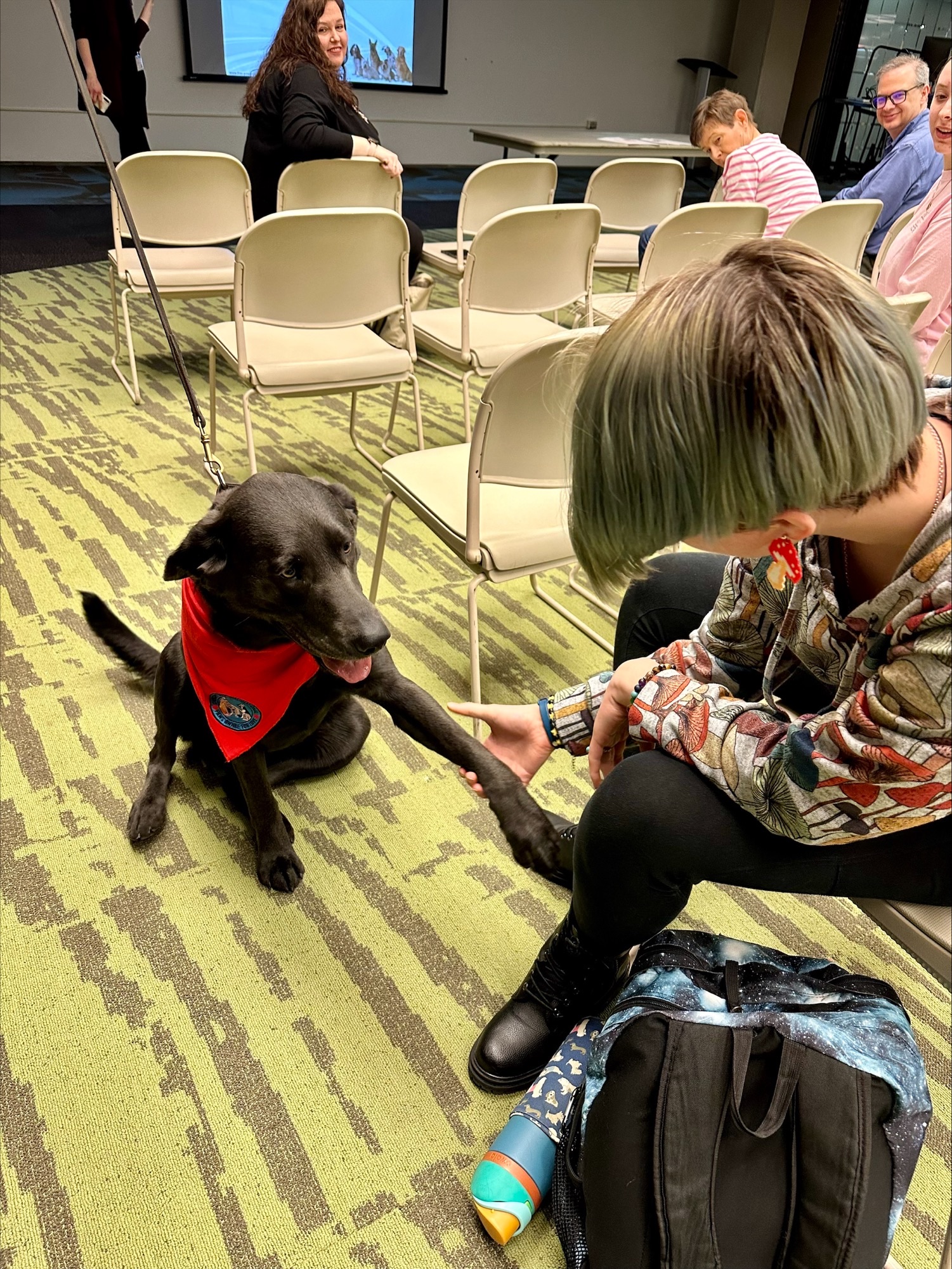The moniker man’s best friend cannot have been easily earned. Of all the animals humans have domesticated and employed, few seem as cooperative, obliging, and sensitive as the dog.
On March 14, Russ Sweet, a trained firefighter and paramedic serving as the trainer and owner of an emotional support dog, and his one-and-a-half year old chocolate lab, Charlee, hosted a talk in the library loggia at Sinclair.
Sweet shared information regarding the many disciplines of working dogs. Although the majority of dog owners today use their companions as domesticated pets, many employ the animal in fields related to their specific abilities.
For example, a German shepherd may sniff out drugs or chase down suspects where a police officer cannot. An Alaskan malamute can carry people and supplies through the treacherous terrain of a snow covered countryside with few roads. The eyes and nose of an Irish setter can sense a hunter’s target well before the hunter himself knows of its presence.
Charlee, however, has been trained as a therapy dog since a pup. The culmination of a therapy dog’s training allows the passage of a series of tests. The dog must ignore evolutionary instinct in preference for the well-being of their subject. They must react to stimulus in a calm manner befitting their purpose.
Dogs are emotional creatures too. They feel stress comparably to humans, but their training and utility allows them to subside the emotion for the betterment of the subject.
“After a long day’s work,” Sweet said, “Charlee enjoys herself a nice long nap.”
Therapy dogs are primarily used to alleviate stress for groups or individuals. Whether it be acute stressors from day-to-day occurrences or critical incidents, a therapy dog can relax the subject’s mind. They’ve begun employment in higher numbers in police departments, fire houses, universities and hospitals; all areas where stressors are rampant.
Sweet’s short term objective is to access schools and universities, having noticed an unsettled degree of stressors in these environments. Especially around exams, the calming presence of an emotional support dog is hypothesized to increase test scores and a student’s relationship to material.
Charlee’s mere presence in the room during the presentation offered a sense of tranquility and joy. The audience smiled and laughed as Charlee made her rounds accepting the treat of pets from each member of the crowd, baring her tongue and teeth like a smile.
Domesticated dogs heavily depend on humanity. Sweet encouraged his listeners to understand the utility in the inverse. Often overwhelming and uncontrollable variables in life can be quelled simply by their presence. This is the historically ignored power of a dog.
Words and photos by Davis Miller, Intern

